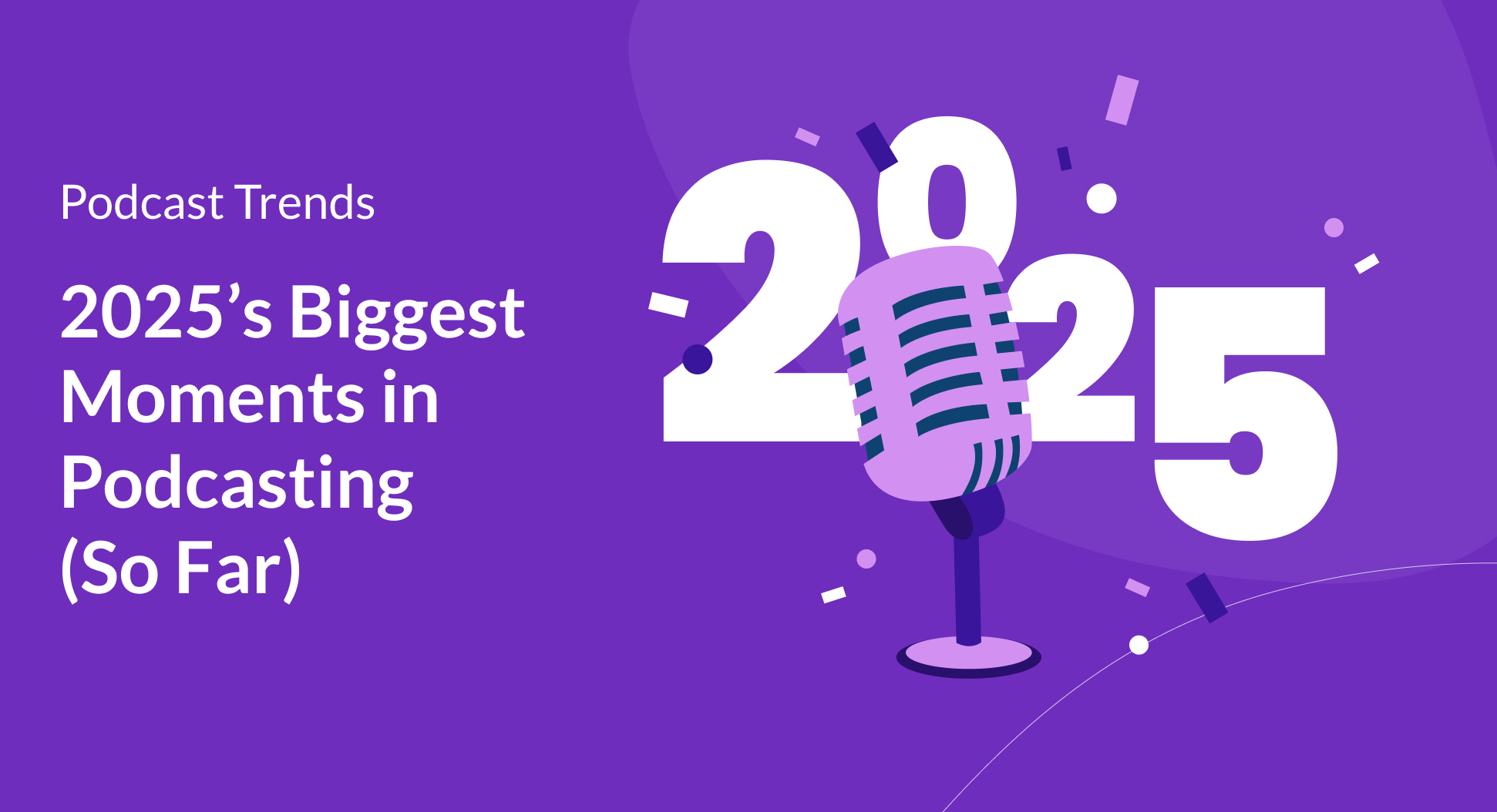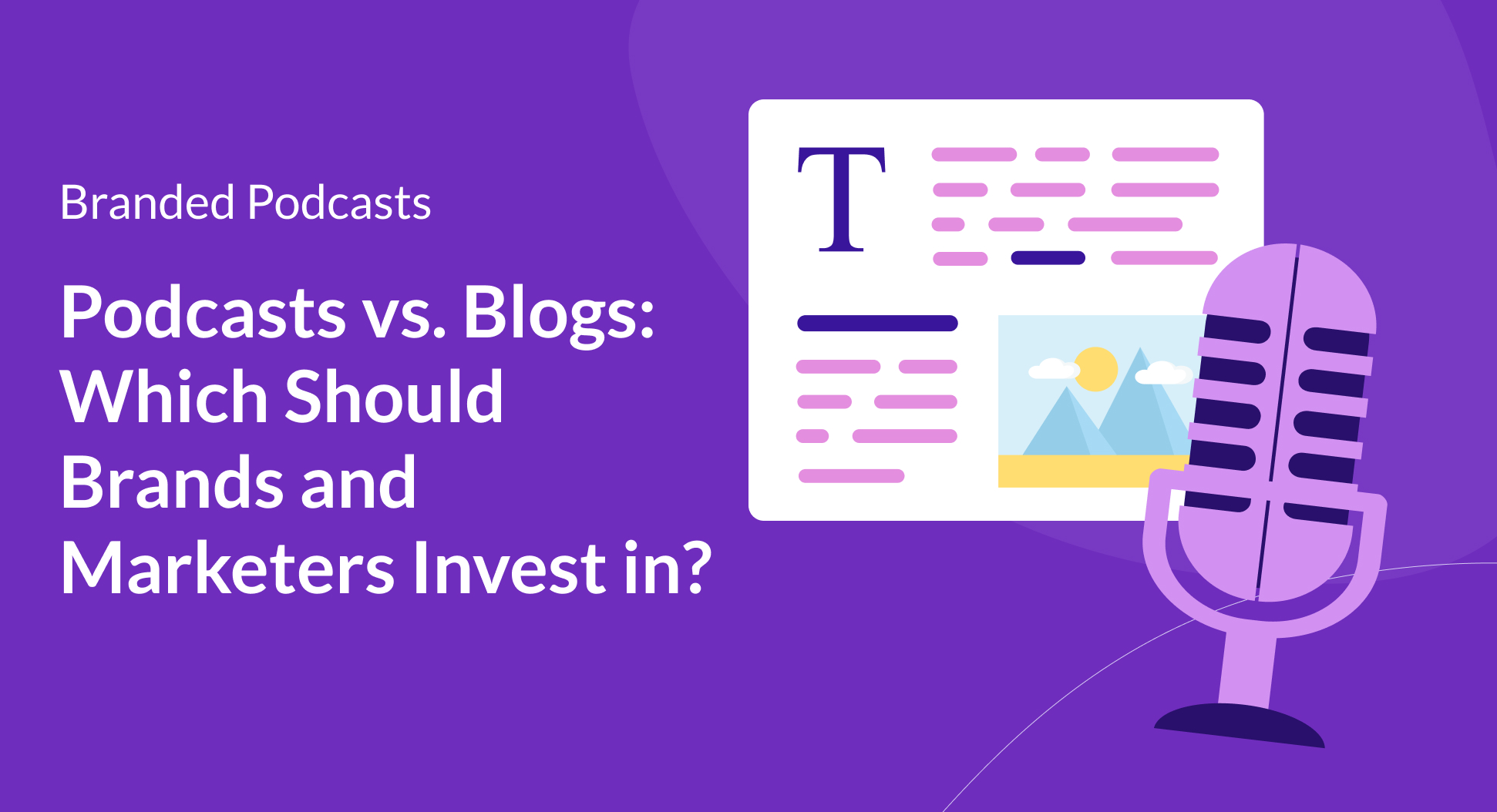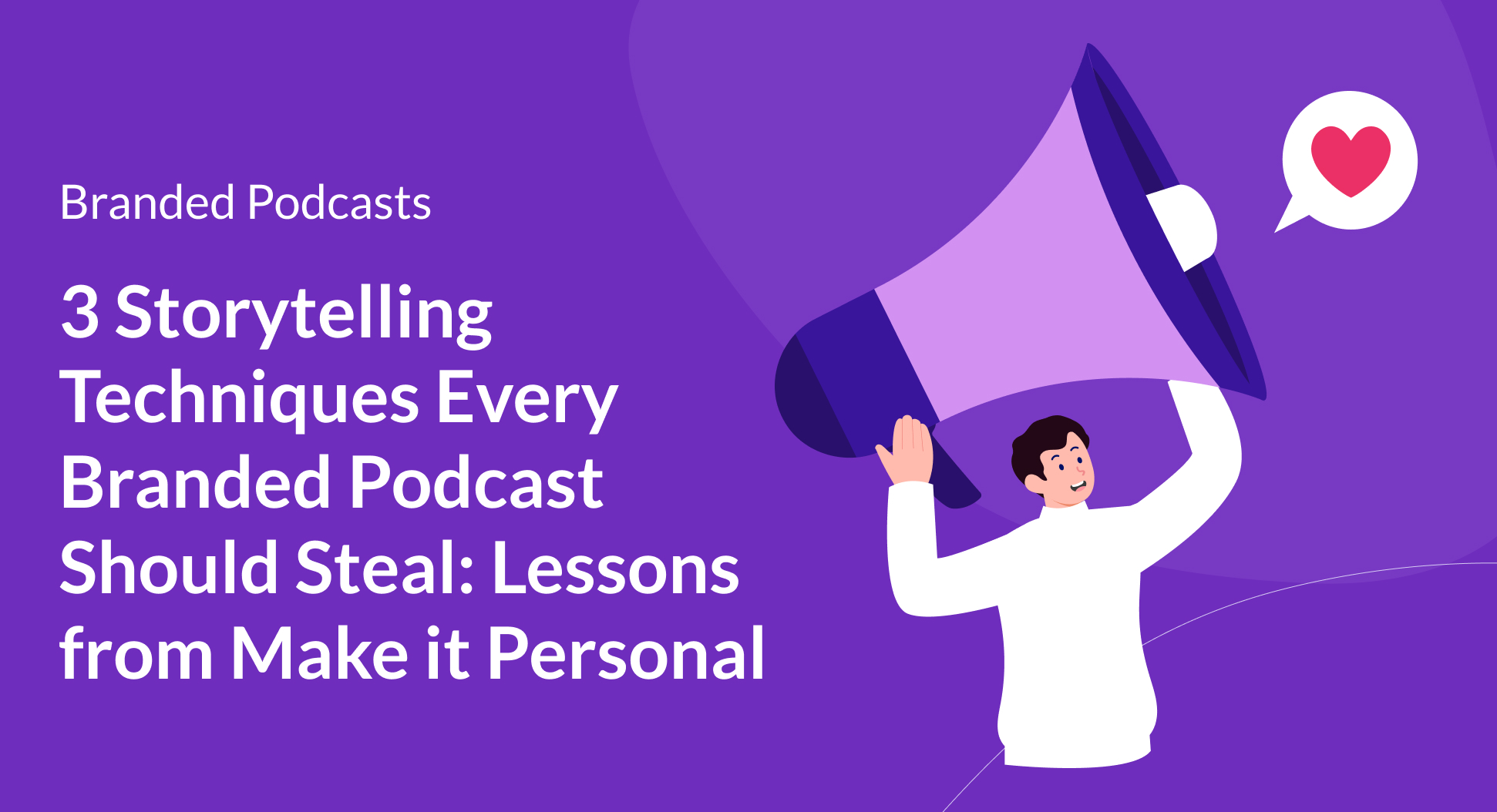Contents
Ever wonder how you can improve your show and make your podcast content even more compelling?
The answers lie in analyzing your podcast data. The good news is this data is available at your fingertips and will help you understand not only how engaged your current are – but will make it easier to attract new listeners over
Let’s explore 4 easy ways you can measure and analyze your existing podcast data and use it to inform your show’s audio content.
1. Number of listeners and downloads
The number of listeners and downloads for each episode can give you a great sense of which episodes are resonating with your audience. Overtime your data will give you an even clearer picture so continue to track this metric over the long haul.
However, when you’re analyzing and comparing unique listens and total listens, remember that unless you’re using a unique listener report, “total listens” are measured each time someone presses play. So, if you’ve got a high number of listens, it can mean repeat listens, not necessarily that your audience has grown.
Furthermore, remember that subscriptions and downloads don’t necessarily mean the person has listened. Instead, look for common themes in listener peaks. Listener peaks within episodes are an excellent marker of content that is hitting a cord with the audience and you can always use that to inform future content and help you decide where to place CTAs (call to actions).
Approach your audio content as something that is fluid. The number of listeners, downloads and episode listener peaks can all lead to changes for future episodes so you’re continuing to put out content that’s landing.
2. Demographics, location and device type
Surprisingly, many people in the podcasting world don’t realize the power of this data. Knowing the demographic, location and device type of your podcast listeners will allow you to get really creative.
If you know that your podcast happens to be, for example, really popular in Austin, TX –
you can use this information to your advantage by hosting live events in the city and pitching local brands for sponsorship opportunities and extra monetization.
Being able to take your audience from online to offline in a live event setting will allow you to continue to build a strong brand because your local listeners in those cities will feel even more connected to the show. You can even have giveaways that are targeted to cities where most of your listeners reside (especially in the early days!) or if you feel brave enough you could even host a live recording of your podcast in specific cities.
At the same time, use your analytics to learn how people are listening to your show. Learn about your listeners’ device type and platform and leverage this data to provide added value to these listeners.
For example, if they’re listening via YouTube, you can easily create additional content like video and live podcasting so that your fans can tune into your content on their preferred platforms. If they’re listening on a home speaker, your audio SEO must be up to par to ensure your podcast is accessible by voice recognition software. Paying attention to these details will help you reach a larger audience and will ensure that your content is meeting your fans exactly where they are.
Quick tip: It’s important to make sure that the relevant CTAs are present on your website or podcast hosting site for your listeners’ preferred platforms. Remember, having your audience engage with your CTA is the best way to spread the word about your show and keep them coming back.
3. Measuring audience engagement
To measure audience engagement, analyze your listener drop-off or consumption rate episode over episode. Ask yourself the following questions:
- Are people skipping over your intro or ads?
- Are they pausing or stopping at a certain part of the episode?
- Are they relistening to some sections?
All of these data points can inform you which parts of your show are resonating and where some changes may need to be made.
Studies show podcasts lose up to 35% of their listeners during the first five minutes, so it’s critical that your intro is compelling. Compelling audio content isn’t just about the actual content, but it’s about the sound engineering. Make sure to add catchy, relevant music and sound effects that evoke a feeling or emotion. All of these details help with overall audience engagement.
Lastly, don’t forget to use your social media handles and subscription or donation site analytics to see how your fans interact with you outside of their podcast listening platforms. Platforms like Google Analytics are a free and easy way to create tracking links.
It’s also key to set aside time (whether it’s you or a community manager!) to ensure you’re engaging with your social media audience in the form of likes, comments, questions, polls and giveaways.
When a host or show engages with their audience it not only shows your listeners that you care, but it’s a great way to conduct focus groups and understand what your audience is looking for. This type of information is invaluable when it comes to creating even more relevant and compelling audio content in the future.
4. Podcast reviews & feedback
We all know that checking social media and podcast directories for your ratings and feedback from your listeners is a great way to learn about your impact.
Encourage your audience to give feedback using “like and subscribe” CTAs and show your appreciation by actively implementing their ideas for improvement.
Remember, generally when someone takes the time to leave a review, it’s because they have something significant or thoughtful to say. This kind of feedback can be key to continuing to level up your podcast content and give your audience exactly what it is looking for.
Feedback can come through channels such as:
- Social media
- Listening apps (such as Apple Podcasts)
- Website forms
Start using podcast data to create compelling audio content
Without podcast analytics to guide you, you won’t be able to make informed decisions on how to best market, advertise, grow, and most importantly, the content that resonates with your audience. If you don’t know where to start, there are a number of podcast analytics tools and services out there; below is a list of some of the leading ones:
- Apple, Spotify and Google podcast analytics
- CoHost
- Chartable
- Podtrac
- Transistor
- Sounder.fm
If you would like to learn more ways to use podcast data to create compelling audio content, feel free to get in touch with our team that can help.

.avif)







.png)

.png)




.png)
.png)
.png)
.png)